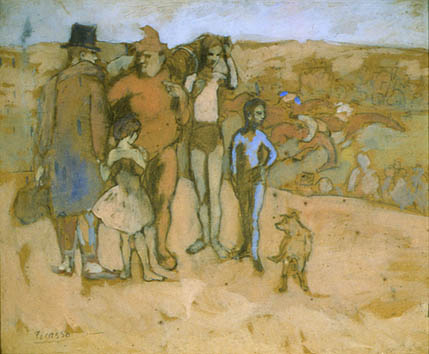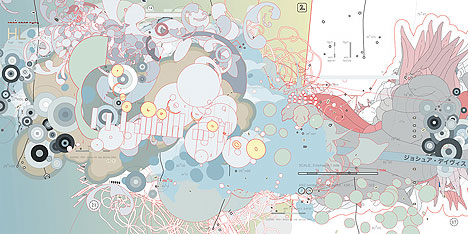Good design is life-affirming. It makes us feel like someone cared enough to make something that we will enjoy. The deliberate beauty inherent in good design is proof that existence is not all chaos and suffering, so hooray for that.
Photo credit: flickr.com/max78
One of my favorite design companies is IDEO. The company was founded by David Kelley, because as he told Fast Company, “I had an intuition I couldn’t survive corporate America. I hated the hierarchy and just wanted to work with my friends.” What’s not to love about that?
The current CEO for IDEO is Tim Brown. In an earlier post, I looked at his ideas about playfulness. This time I want to focus on another TED Talk he gave. It’s here below:
[ted id=646]
Most striking to me is his challenge to wrestle design away from the “priesthood” of designers and give it back to everyone. Mr. Brown explains that you don’t have to study design for years to use its principles. Just think about how someone else will use a particular product or service and adjust accordingly. When other people start smiling while experiencing what you do, then you’ll know you’re on the right track.
This got me thinking about the kinds of everyday things that are well designed. Here are a few examples: If you’re buying furniture at Target you’ll notice that all the display items have an easy-to-see red circle with a number. To ensure the furniture you buy is the same as the one you saw on the display, all you have to do is match the circles and the numbers.
Simple, but a lot of stores don’t do that, and that means there’s more of a chance that someone will buy the wrong item.
Photo credit: flickr.com/bhamsandwich
The recycling program here in Chesapeake provides a blue recycling bin that is the same size as the city’s trash cans. The lid on the recycling bin features colored pictures and words that illustrate what can and cannot be recycled. It is now so convenient to recycle that someone would have to exert more mental effort to avoid doing so.
Suppose, though, that the bin wasn’t the same size as the trash can and it had no picture. Then, I might notice that the recycling box is already full and out of reach. Suppose too that I wasn’t sure about whether the bottle I was holding could be recycled. Instead of taking the time to Google it, I would just throw the bottle in the trash. The thoughtful design of the city’s recycling bin undermines that possibility.
These days when I play a new video game, I first like to try it without reading instructions. It’s not just because I’m a guy who avoid instructions on principle to demonstrate manliness. Rather, I want to notice the kinds of clues that the developers added to aid my progress, and besides the better designed games render the manuals redundant.
In those kinds of games, not only do you learn where to start, but you also get contextual hints if you linger too long in one spot, and should you run into trouble too soon, healing potions appear. That way you won’t get too discouraged before you’ve had a chance to get immersed in the game. Wouldn’t it be great if consumer electronics like cameras or WiFi routers did similar things?
Photo credit: flickr.com/adobemac
In regards to books, when I see a chapter that approaches a hundred pages, I think to myself, “oh man, how will I finish this? Not too long thereafter I end up doing something else. (Perhaps you, my noble reader, can relate. I don’t write the shortest of posts, I know, but I’m working on it. Until then, maybe you can just look at the pictures and nod solemnly a few times as you pretend to read.)
In comparison, Stephen King generally keeps his chapters short. It’s the literary way of saying, “come on fella. You can do it. Just a few more pages and you’ll finish off another chapter.” This is not to say that Mr. King’s books are hard to read. He knows how to keep his audience engaged, so the pages basically turn themselves.
A few more examples: A masterful painter adjusts his composition so that the vanishing points, sight lines, and areas of contrast guide your eyes to the important parts. Or, think about all the Westerns you’ve seen. When the bad guys wear mostly black and the good guys wear mostly white, isn’t it easier to tell what’s happening in a big gunfight or bar brawl? Without color clues to distinguish the warring factions, action scenes sometimes devolve into noisy confusion.
But, you don’t have to be a movie maker to bring design thinking into your world. If you turn off your wipers when going through the tolls then you’re designing a better experience for the attendant who won’t get splashed with water. If you write company policies in readable English, then you might actually get employees to read them without resorting to threats.
Photo credit: flickr.com/bhamsandwich
Do you have any additional suggestions about how others could design a better experience for you at work or at play? If so, please share them.
Should you, for some freak reason, want to design a better experience for me in regards to this blog, then you could leave comments or share your gratitude if you appreciate my writing. I’m not doing this for a paycheck, so it keeps me motivated when I know that I’m doing something others value and find helpful. Also, if you happen to be planning your will in the near future, I could use a foundation of some kind because, you know, that does look nice on the ole resume.
There’s another way you can help. One of the things I do when I’m not writing or sharing meals with the stars—and by stars I mean the illustrious ones in the sky— is technical support for Canon.
On behalf of the world’s technical support representatives, let me humbly ask you to graciously AVOID WRITING IN ALL CAPS. It is not enjoyable to read. We want to help you. Help us help you.
One more thing, and this is more of a personal issue, so take it with a grain of salt, or spice it up with a dash of pepper, if you prefer. Here goes: when you say ASAP, you might think that you are communicating your cleverness and efficiency by saving the 2.3 seconds that it would take to say something more personable like “as soon as you can.” Unfortunately that is not the case.
Furthermore, you might also believe that by writing ASAP repeatedly and then underlining it and highlighting it and maybe even putting glitter on it, you are bumping your inquiry to the front of the ASAP queue. This too is a tragic inaccuracy.
Just be honest about your situation and treat people with respect, and you’ll get much better results most of the time.
Photo credit: flickr.com/austinevan
In closing, we can all show others that we care through the things we design, even if we’re not professional designers. It’s just a matter of doing unto others as you’d have them do unto you and doing so in an elegant way.







